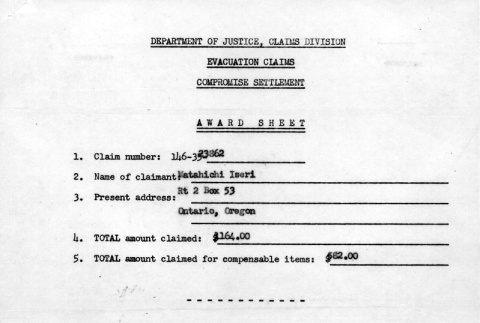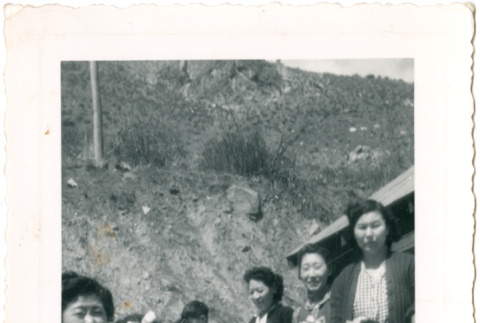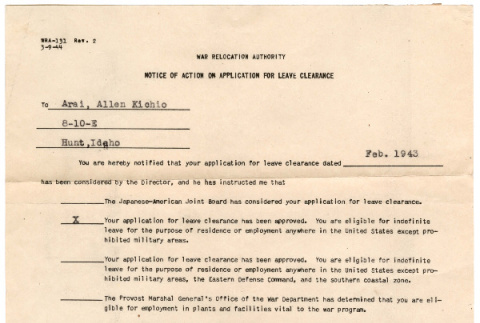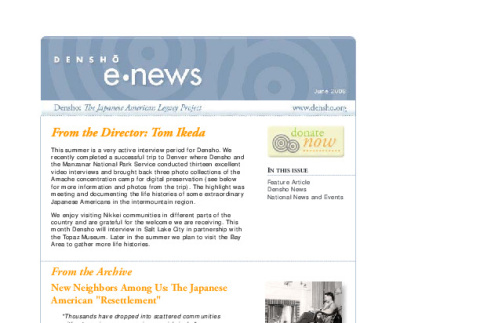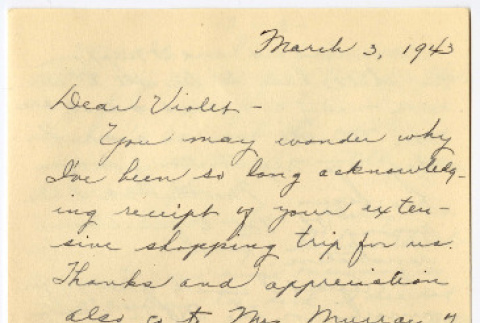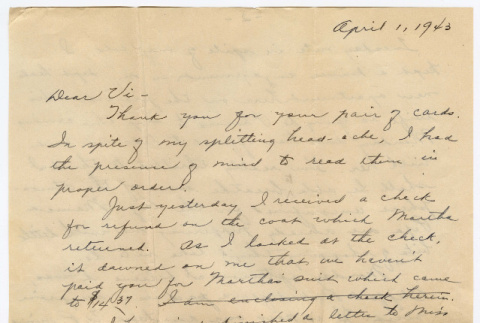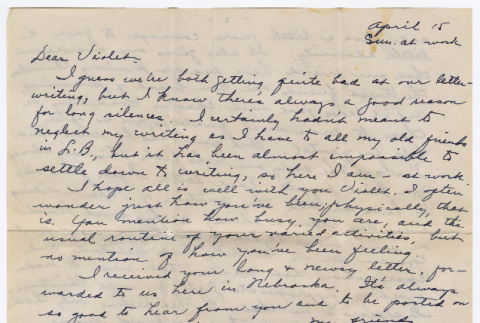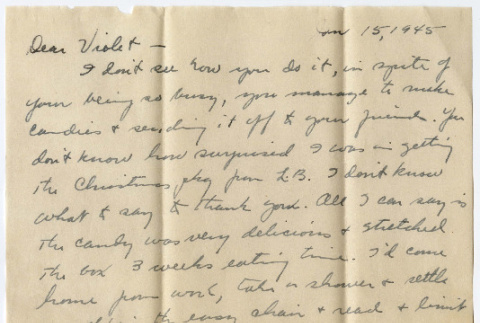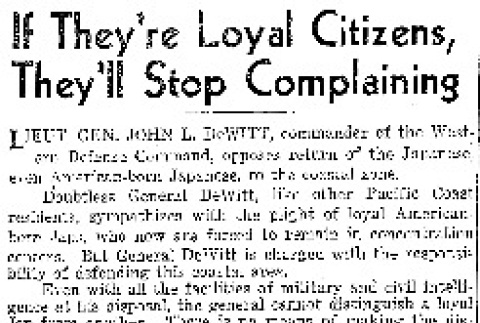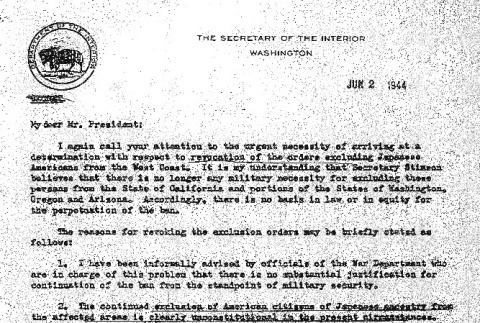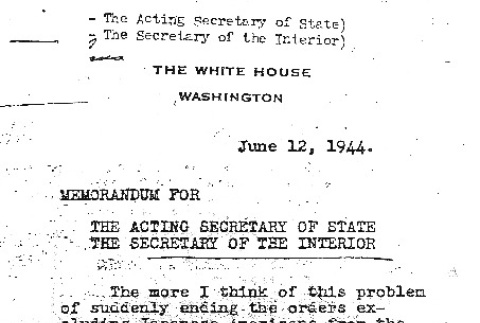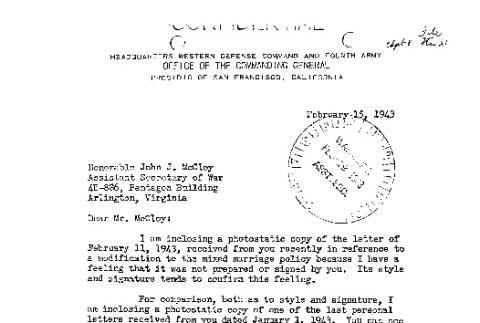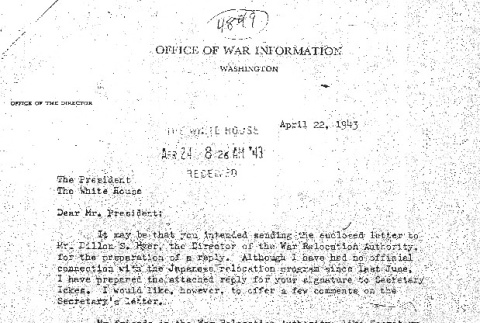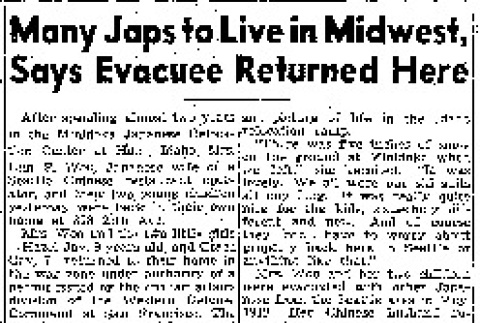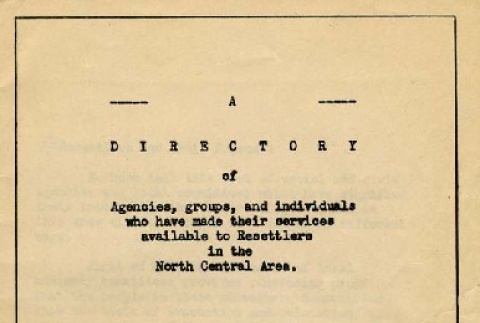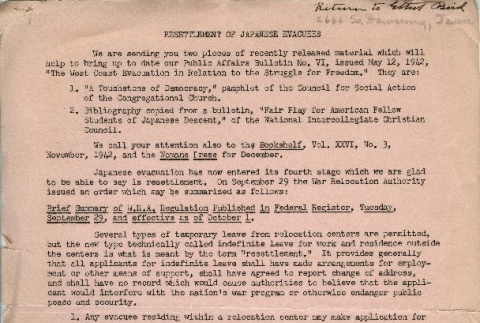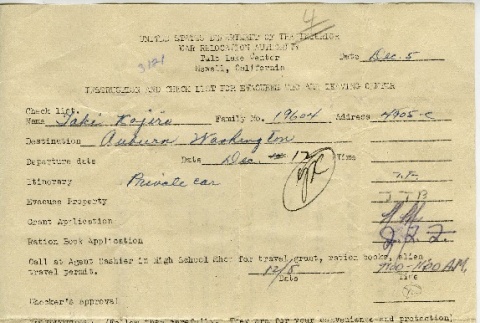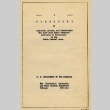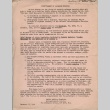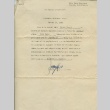"Resettlement"
Politics [235] (formerly Political activism and involvement [120])
World War II
(231)
Leaving camp
(287)
"Resettlement"
(1482)
Related articles from the
Densho Encyclopedia :
None,
Japanese American Evacuation and Resettlement Study,
Japanese American Joint Board,
Thomas W. Parker,
Resettlement,
Resettlement in Chicago,
Resettlement in Denver,
Resettlement in New York,
Salt Lake City governors' meeting,
Terrorist incidents against West Coast returnees,
Gretchen Van Tassel
1482 items
1482 items
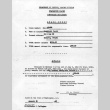
doc
Evacuation claims settlement sheet (ddr-densho-25-65)
Under the Japanese American Evacuation Claims Act, Matahichi Iseri claimed $246 in damages from losses due to World War II. In 1952, the Justice Department awarded him a compromise settlement of $226. He was fortunate to receive an amount so close to his original claim, since many Japanese Americans received much less.

doc
Application for relocation assistance (ddr-densho-25-58)
This application for relocation assistance was filled out on February 15, 1946, by Mae Iseri, under her married name of Mae Yamada. The application lists herself and her two sons. They wished to relocate to Kent, Washington, and were granted $25.

img
Group of women and children sitting at outdoor table (ddr-densho-430-187)
Likely at the Anderson Ranch Dam project. Printed on front: April 1946

doc
Leave clearances (ddr-densho-430-92)
Approval of indefinite leave for resettlement for Kichio Allen Arai and Nobu Arai.
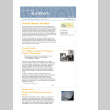
doc
Densho eNews, June 2008 (ddr-densho-431-21)
Article titles: "From the Director," "From the Archive: New Neighbors Among Us: The Japanese American 'Resettlement,'" "Densho News: Densho and Collaborators Interview in Denver," "Densho Wins History Award," "Please Forward! Share the eNews with a Friend and Win a Prize," "National News and Events: Report to Congress for Camps Preservation Grants," "Reminders of National Conferences," "Honorary …

doc
Letter from Amy Morooka to Violet Sell (ddr-densho-457-28)
Amy Morooka writes to Violet Sell about Violet's shopping on her behalf, her health and their fathers' health, tensions about military registration, struggles with resettlement, and more.
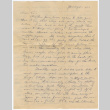
doc
Letter from Amy Morooka to Violet Sell (ddr-densho-457-24)
Amy Morooka writes to Violet Sell about her poor health, gifting Violet a subscription to the Pacific Citizen, being encouraged to leave camp, her job, and anthropologist Robert "Bob" Spencer observing life at camp.

doc
Letter from Amy Morooka to Violet Sell (ddr-densho-457-30)
Amy Morooka writes to Violet Sell about settling debts for items Violet has sent, resettlement, a visit from Clifford Nakadegawa, and more.
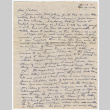
doc
Letter from Amy Sugano to Violet Sell (ddr-densho-457-49)
Amy Sugano writes to Violet Sell with updates on family, to tell her she's expecting a baby, and about life in Nebraska.
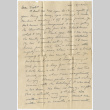
doc
Letter from John Morooka to Violet Sell (ddr-densho-457-45)
John Morooka writes to Violet Sell about Christmas candy, not returning to California, and with updates on friends and family.
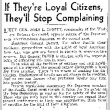
doc
If They're Loyal Citizens, They'll Stop Complaining (April 15, 1943) (ddr-densho-56-899)
The Seattle Daily Times, April 15, 1943, p. 6

doc
Letter from Harold Ickes to President Roosevelt (ddr-densho-67-87)
Letter from Harold Ickes to President Roosevelt urging the President to rescind orders excluding Japanese Americans from the West Coast. Ickes gives many reasons, including unconstitutionality of detaining American citizens, lack of military necessity and psychological damage to Japanese Americans.
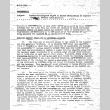
doc
Excerpt from a naval counter-intelligence report (ddr-densho-67-115)
Excerpt from a naval counter-intelligence report on "minority groups' reactions to returning Japanese." Discusses the reactions of the Chinese, Filipino, Korean and African American communities to Japanese resettlement. The report cites efforts by each group in welcoming back the Japanese, but possible tension, especially with the African American community.
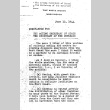
doc
Memo from President Franklin D. Roosevelt (ddr-densho-67-86)
Memo to the Acting Secretary of State and the Secretary of the Interior from President Roosevelt on resettlement. Roosevelt suggests gradual resettlement by seeing how many people would be opposed to the Japanese returning to the West Coast as well as other parts of the country. He also wants to try distributing a few families to …
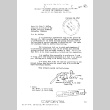
doc
Memo, John L. DeWitt to John McCloy (ddr-densho-67-2)
Memo, John L. DeWitt to John McCloy, regarding mixed marriages and resettlement of Japanese Americans upon release from concentration camps. Includes McCloy's previous memo to DeWitt suggesting reexamination of DeWitt's policy denying return of mixed-marriage couples to the West Coast. Suggests considering requests on the basis of loyalty. In DeWitt's response, he objects to proposed changes, …

doc
Letter to President Roosevelt from M.S. Eisenhower (ddr-densho-67-89)
Letter to President Roosevelt from M.S. Eisenhower on resettlement. Eisenhower is concerned with the entire evacuation program and its effect on Japanese American youth. Discusses negative impact of life in the camps on evacuees. Also suggests that the evacuees know that racism was a motivating factor behind internment. Strongly suggests helping the loyal evacuees "become reabsorbed" …
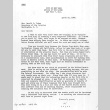
doc
Letter to Harold Ickes from the Mayor of New York (ddr-densho-67-106)
Letter to Harold Ickes from the Mayor of New York regarding resettlement. The mayor is protesting the resettlement of Japanese Americans to New York. Suggests that there aren't enough police to monitor them and wants every Japanese American in New York to declare their loyalty.
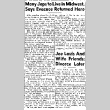
doc
Many Japs to Live in Midwest, Says Evacuee Returned Here (January 30, 1944) (ddr-densho-56-1016)
The Seattle Daily Times, January 30, 1944, pp. 1, 2

doc
Spokane Officials Rap Coming of Japs (July 3, 1943) (ddr-densho-56-943)
The Seattle Daily Times, July 3, 1943, p. 4
